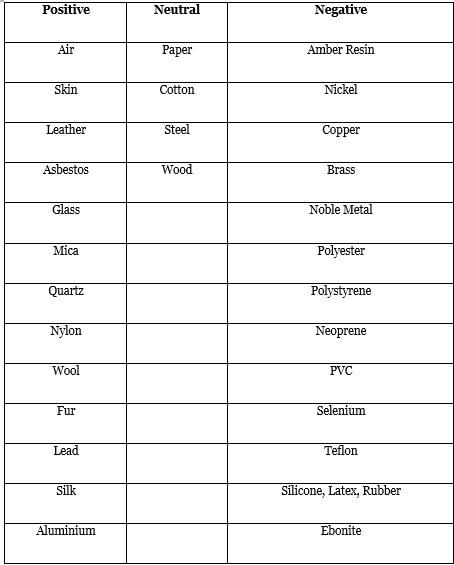Static Electricity | Famous Books for UPSC Exam (Summary & Tests) PDF Download
Introduction
The concept of static electricity was initially explained by Michael Faraday in 1832. Faraday elucidated how generators and batteries function by harnessing the imbalance of positive and negative charges within objects. He introduced the addition of graphite powder to ammunition to prevent damage to the circuitry of semiconductors. When two objects, such as wool and wax, come into contact with each other, one object releases electrons, resulting in positive charging, while the other object receives electrons, creating a negative energy buildup. This phenomenon causes static electricity, causing the wool to stick to the wax. A similar effect can be observed when glassware is rubbed with a silk cloth. As electrons are loosely held within objects, even a slight touch or rub can facilitate the transfer of negatively charged particles, leading to an electrical current discharge.
Properties and Characteristics of Static Electricity
Static electricity arises from an imbalance in the positive and negative charges of an object and can be observed in both conductors and insulators. Examples of static electricity include lightning and the phenomenon of hair sticking to a woolen hat. Static electricity is more prevalent during dry seasons as moisture hinders the transfer of electrons. Unlike current electricity, static electricity does not produce a continuous electric current. Charges generated during this phenomenon remain in a static or constant state due to the force field, which prevents the movement of the discharged energy.
The Role of the Triboelectric Effect in Static Electricity
The Triboelectric Effect refers to the phenomenon wherein the exchange of electrons between objects generates static electricity. Atoms consist of a positively charged nucleus surrounded by electrons, which normally maintain a neutral charge. However, when another object comes into contact with an atom, there is an exchange of particles, leading to an imbalance in the charge. Consequently, one object becomes positively charged, while the other becomes negatively charged. Constant rubbing between these objects creates a self-produced electrical current known as the Triboelectric Phenomenon. Each material possesses a specific amount of charges based on its composition of electrons, protons, and neutrons. The exchange of charged electrons in the Triboelectric Phenomenon remains consistent across different objects, leading to the creation of the Triboelectric Series. The series showcases the behavior pattern of positively and negatively charged objects, irrespective of the objects they are rubbed against.

The Difference between Static Electricity and Current Electricity
Static electricity differs from current electricity in several aspects. While static electricity does not have a lasting effect on the magnetic field due to the unstable exchange of electrons, current electricity can create a magnetic field that remains active for an extended period. This discrepancy prevents the utilization of static current for everyday functionality. In contrast, the stable magnetic field generated by current electricity enhances its usability potential.
Usability of Static Electricity in Modern Science
Although static electricity may not be of significant importance in electricity production, it plays a crucial role in various fields of applied physics. Some applications of static electricity include:
- Supercapacitors
- Piezoelectric Materials
- Laser Printers
- Photocopiers
- Crystal Microphones
- Electrostatic spray paints and precipitators
|
743 videos|1444 docs|633 tests
|
















